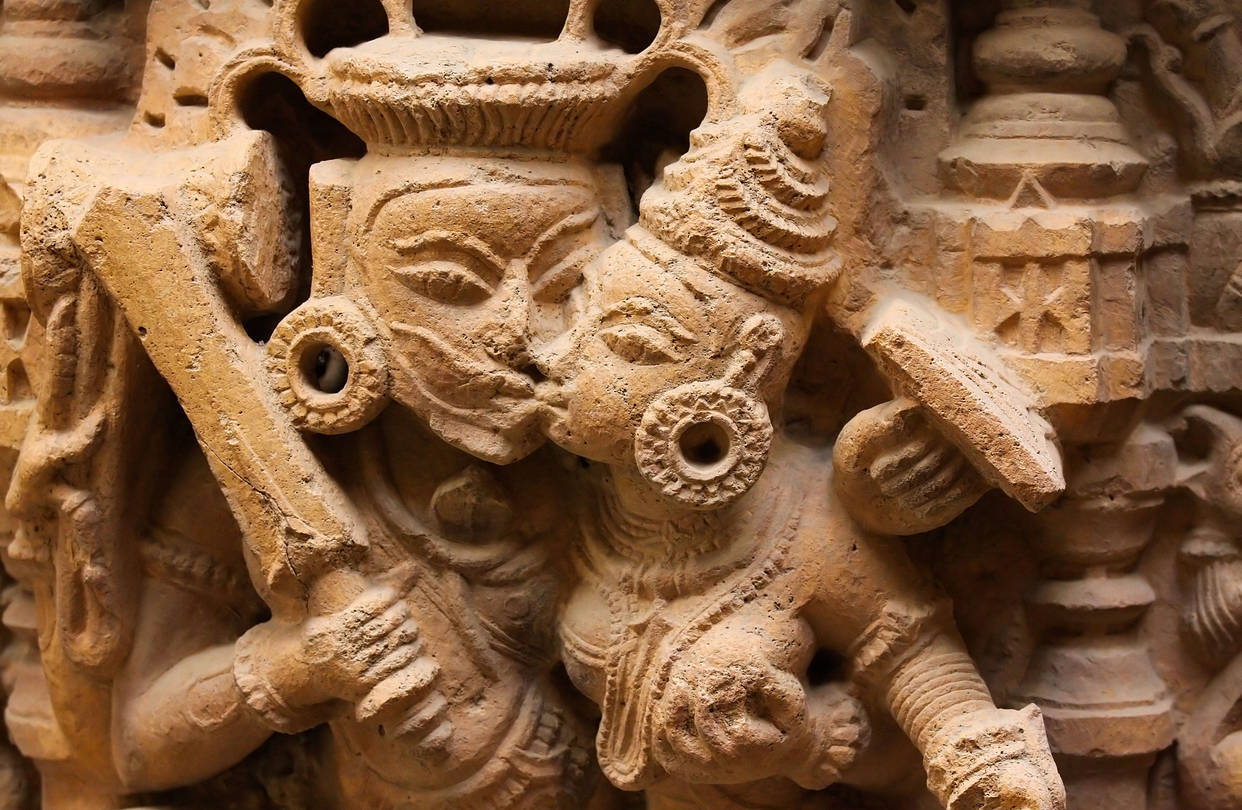Cave paintings in India, some dating to 10,000 BC, show men and women with exaggerated genitals, indulging in sexual acts, women birthing babies, and men and women dancing in joy, even indulging in orgies as well as sexual violence. Harappan cities, with their standardisation and regulated cities, seem too austere to be linked with romance or pleasure. But the women were bejewelled, and they did eat spicy oily food, and wrapped themselves in brightly coloured cotton fabrics. So, pleasure was clearly part of their life.
It is in the Veda that India’s pleasure (kama) heritage is first articulated very clearly. Here, desire is the seed of the mind that incepts creativity. Atharva Veda says, “Desire gives. Desire receives”. Kama, we are told, is what stirs the first being to create the world.
With Buddhism, desire became the enemy. Kama was seen as Mara, the demon to be defeated, in order to walk the spiritual path. Jain stories spoke of how desire was always associated with violence and trapped one in the wheel of rebirths. The Brahmins pushed back by composing the shastra—texts where kama was seen as a balancing force along with material success (artha) and social responsibilities (dharma). Kama was not the enemy; it was an ingredient in the spice of life.
Kama, the god of desire, was burnt to ash by the fiery glance of Shiva’s third eye. But, Shiva, the destroyer of desire (Kamataka) also became the lord of desire (Kameshwara) by marrying Shakti. Kama was resurrected in the body of Vishnu and as his son, Pradyumna. As temples rose, rituals were performed where gods got married and enjoyed all forms of pleasure. Thus, desire was validated and given a legitimate place.
The Prakrit Gaha-Saptasati, and Tamil Sangam Akam (interior) poetries captured the romantic and erotic longings of men and women. The more elite Kama-sutra and Ananga-ranga argued that erotic manuals ensured wives stayed faithful to their husbands.
Eventually, however, sex became part of occult rights and mystical metaphors. Tantra saw the sexual act as a tool to attain supernatural powers (siddha). New forms of Bhakti emerged where devotees sought union with the divine in erotic terms. Men became lovers (rasika) who gave up their masculinity, cross-dressed, and sought union with Krishna and Ram. This idea even influenced Sufis, who entered India and saw relationships with the divine in emotional and erotic terms, shocking the orthodoxy. Many saw these shifts as perversions.
But, as foreign ideas rolled into the country, India’s erotic legacy was challenged. Those who followed the path of Islam insisted that pleasure needs to be private, behind curtains, walls and veils. Poets went through great efforts to separate prema (romance) and bhakti (engagement) from kama (lust). The disembodied forms of God (nirguna) were preferred over the embodied (saguna).
Then came the puritanical values of both colonisers and nationalists from the 19th century. The British saw India’s erotic legacy as a remnant of savage barbarism, in need of European civilising missions. The founding fathers of the Indian Nation State saw India’s erotic legacy as debauchery that led to the downfall of Indian civilization. Freedom fighters wore the monastic white to express ethical and moral superiority. But the colours of kama managed to survive surreptitiously in festivals, and the silver screen.





